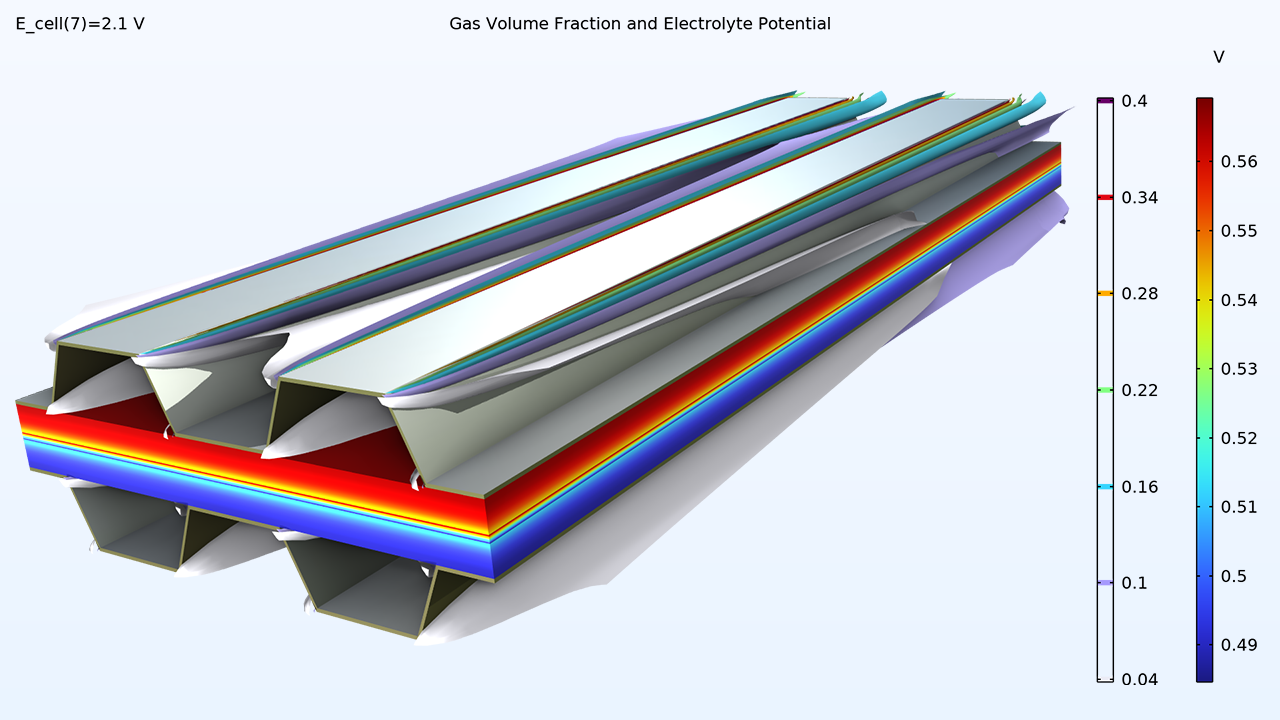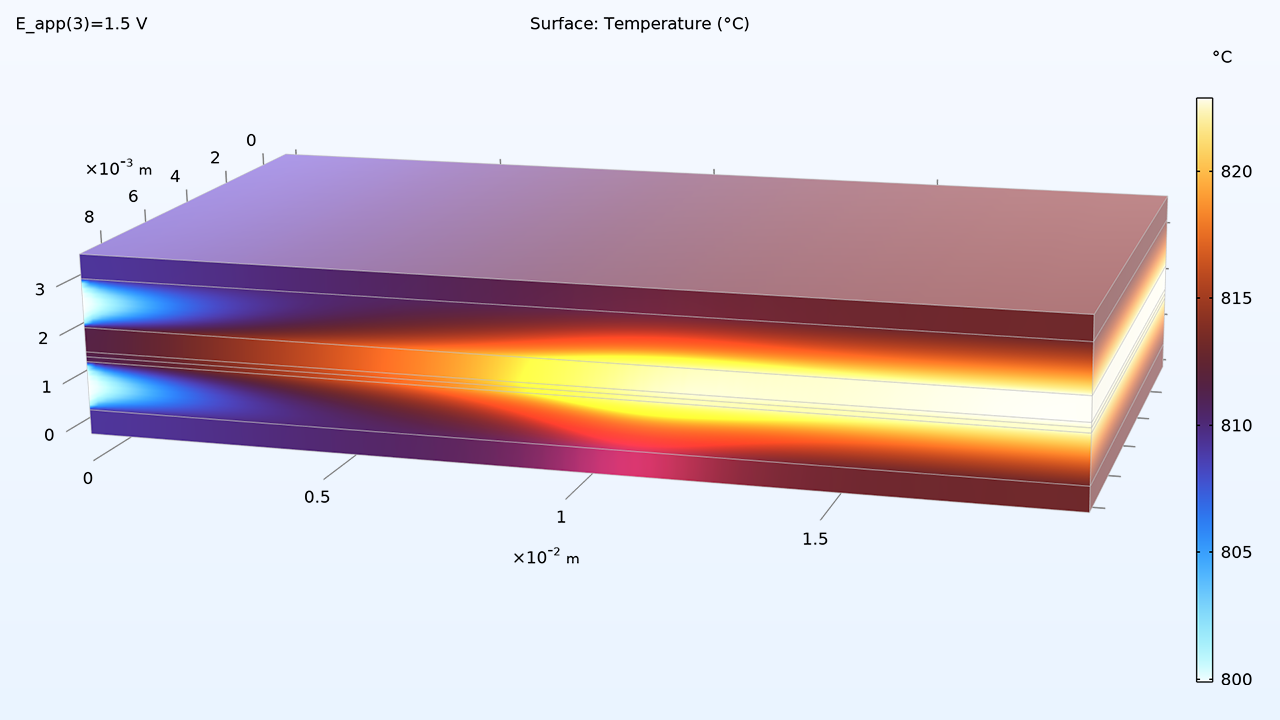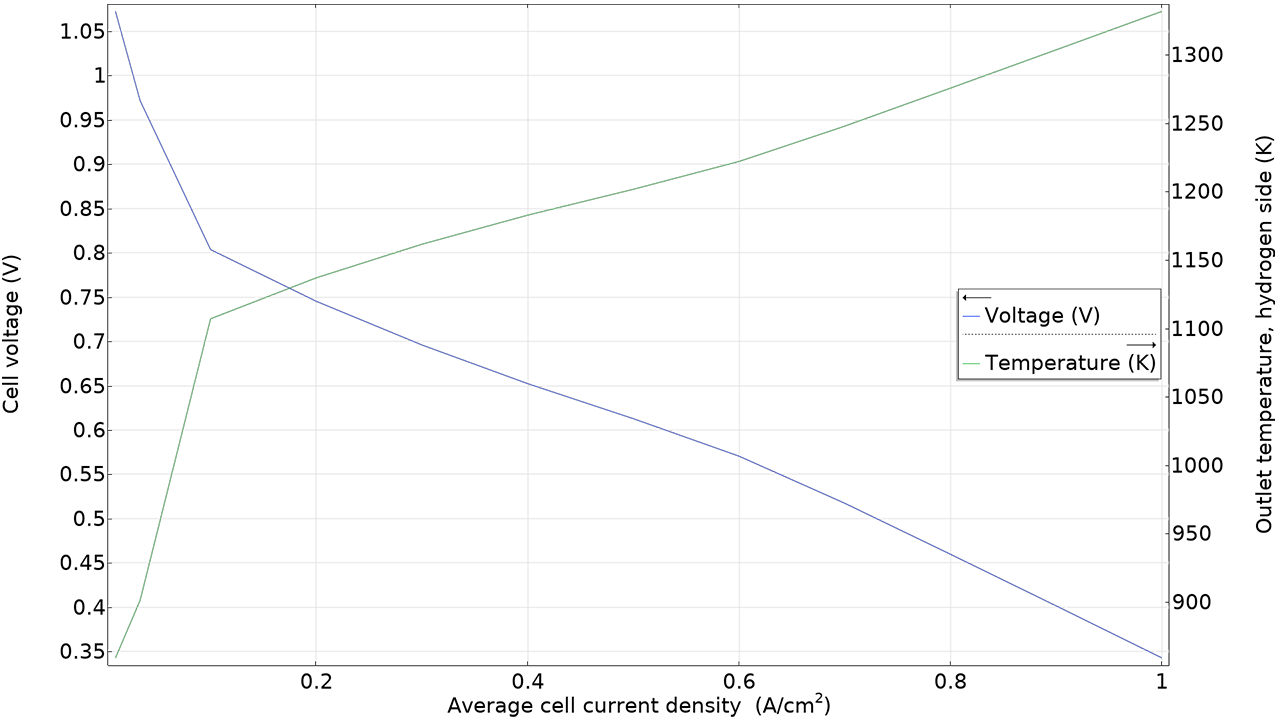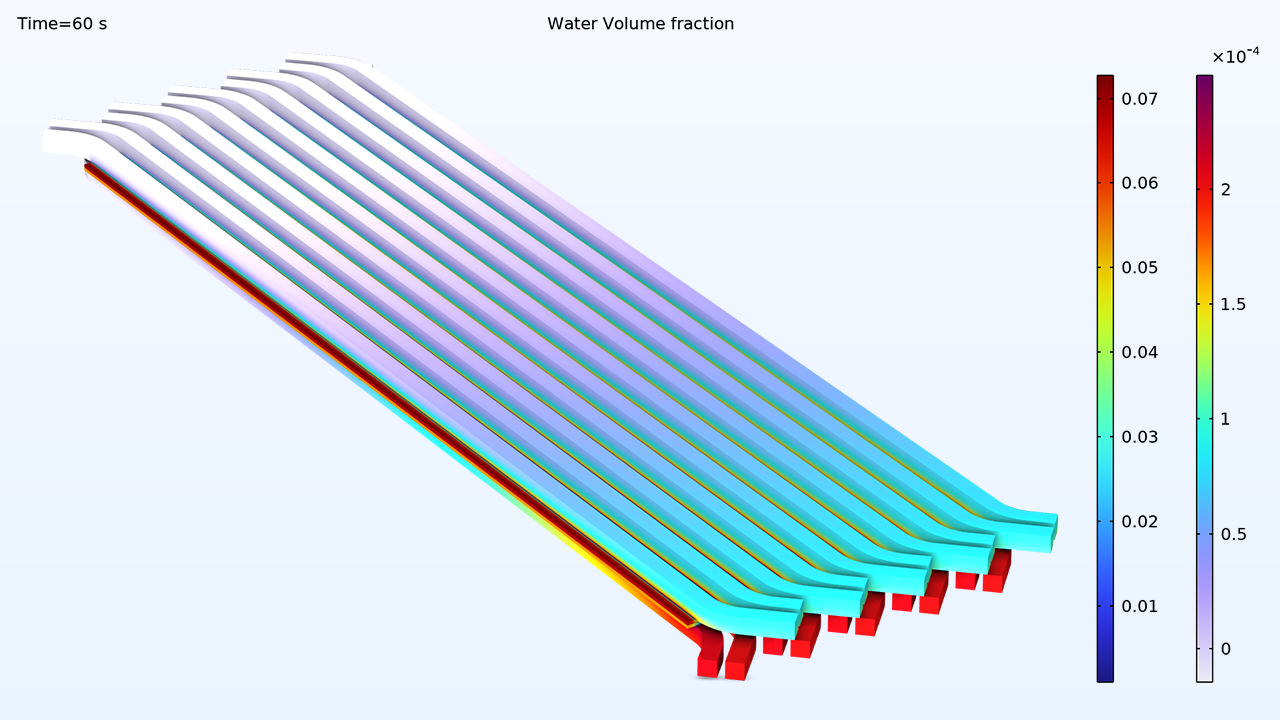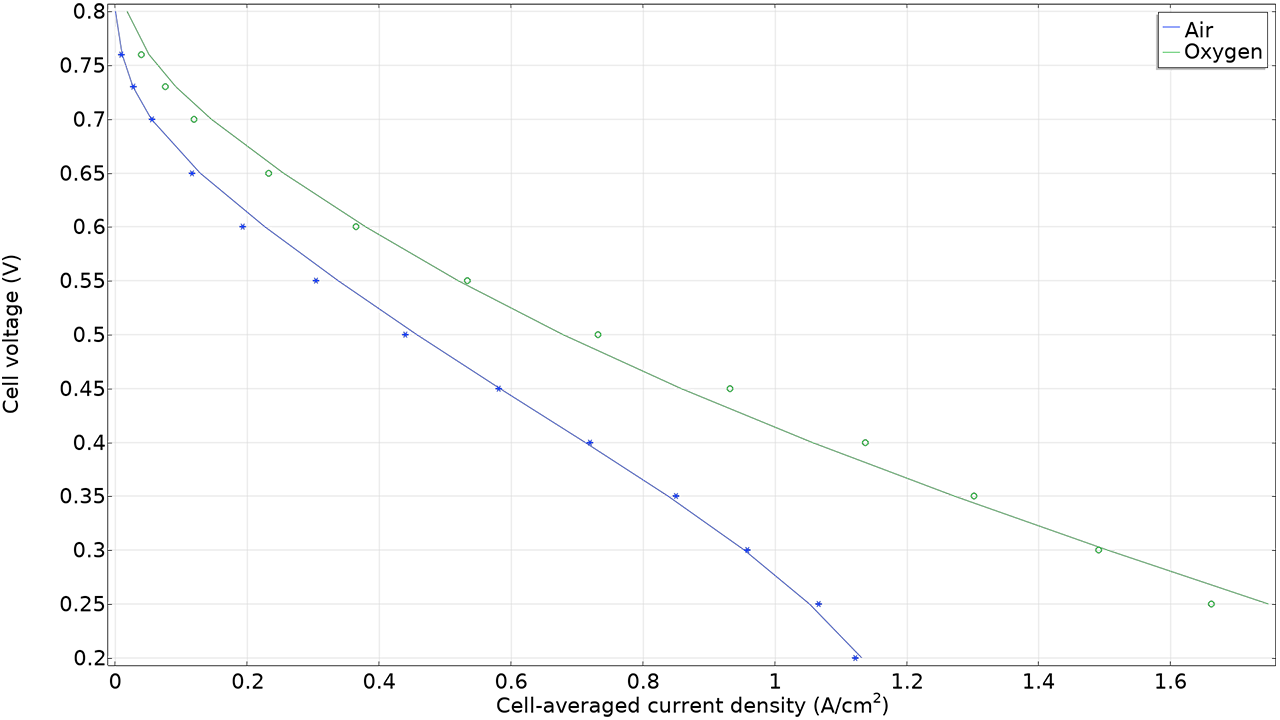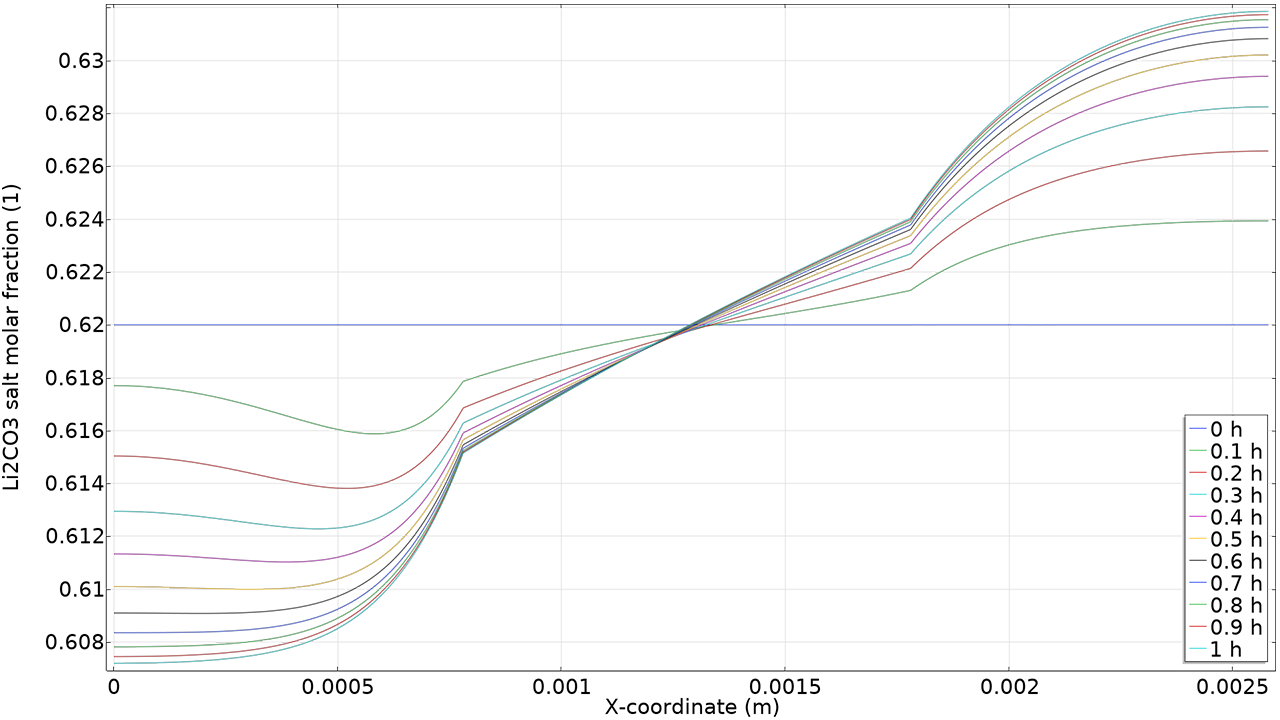Nouveautés du module Fuel Cell & Electrolyzer
Pour les utilisateurs du module Fuel Cell & Electrolyzer, la version 6.3 de COMSOL Multiphysics® introduit une nouvelle interface pour modéliser le transport dans n'importe quelle solution d'électrolyte, des fonctionnalités et des variables améliorées pour les écoulements diphasiques, et de nouvelles capacités pour l'estimation de paramètres. Apprenez-en plus sur ces nouveautés ci-dessous.
Transport d'électrolyte concentré
Une interface Transport d'électrolyte concentré est maintenant disponible pour modéliser le transport dans n'importe quelle solution d'électrolyte avec un nombre arbitraire d'espèces chargées et non chargées. Cette interface d'électrochimie est basée sur la théorie des solutions concentrées, pour laquelle les équations de transport sont définies en utilisant des coefficients de diffusion binaires de Maxwell-Stefan en supposant une électroneutralité locale. Contrairement aux équations de Nernst-Planck, la théorie de la solution concentrée ne suppose pas que les espèces électrolytiques soient diluées dans un solvant neutre de concentration constante. Les électrolytes typiques qui peuvent être modélisés comprennent les liquides ioniques, les sels fondus et les solutions hautement concentrées présentant des gradients de concentration non négligeables des espèces porteuses de charge. Le nouveau tutoriel Molten Carbonate Transport illustre cette fonctionnalité.
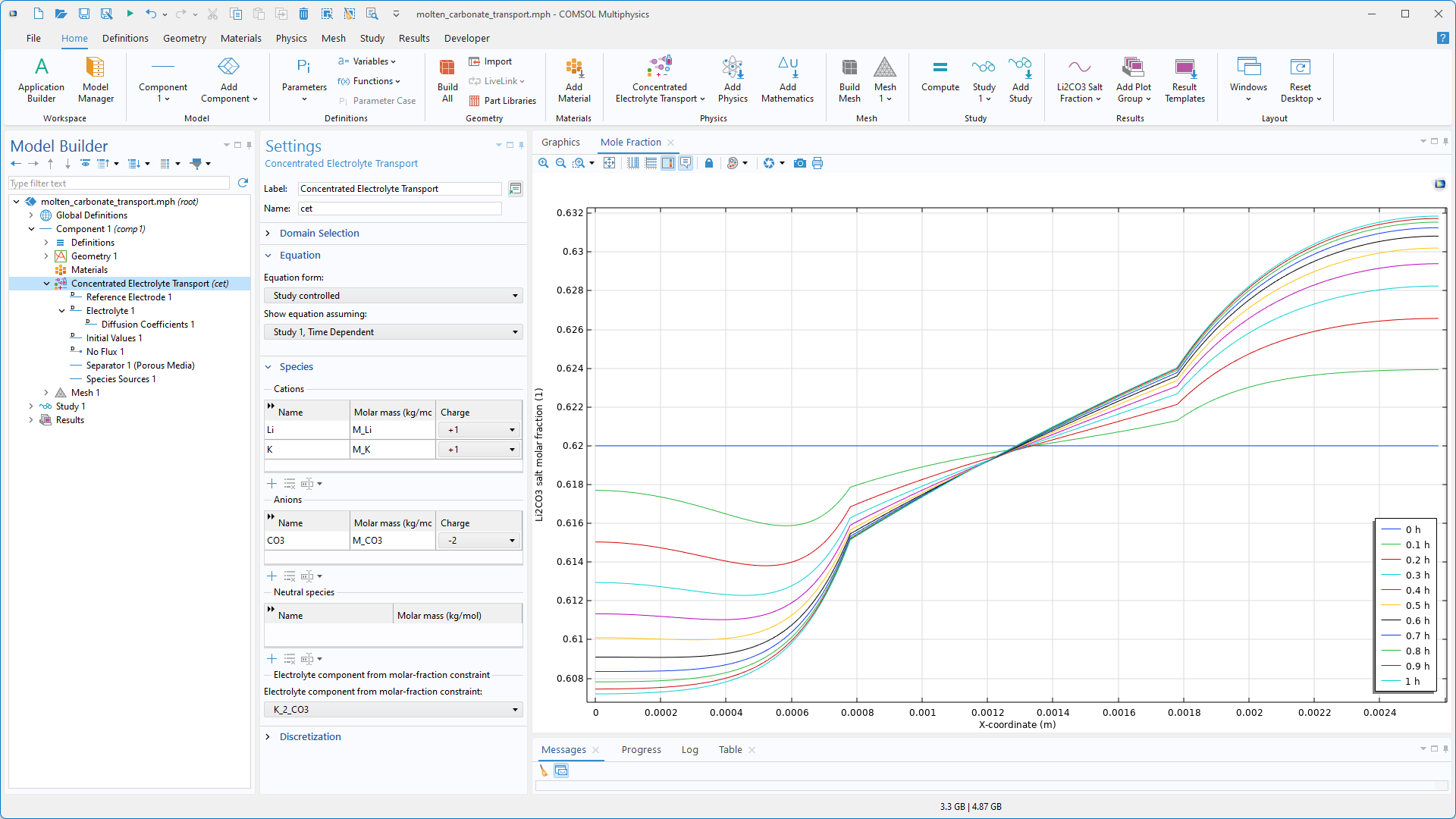
Estimation de paramètres
L'étape d'étude Estimation de paramètres et les solveurs d'optimisation BOBYQA, Levenberg-Marquardt et IPOPT sont désormais disponibles dans le module Fuel Cell & Electrolyzer. L'estimation de paramètres est utilisée pour déterminer des paramètres de modélisation en ajustant les simulations aux données expérimentales. Le tutoriel Parameter Estimation of a Polymer Membrane Fuel Cell Model illustre ce nouvel ajout.
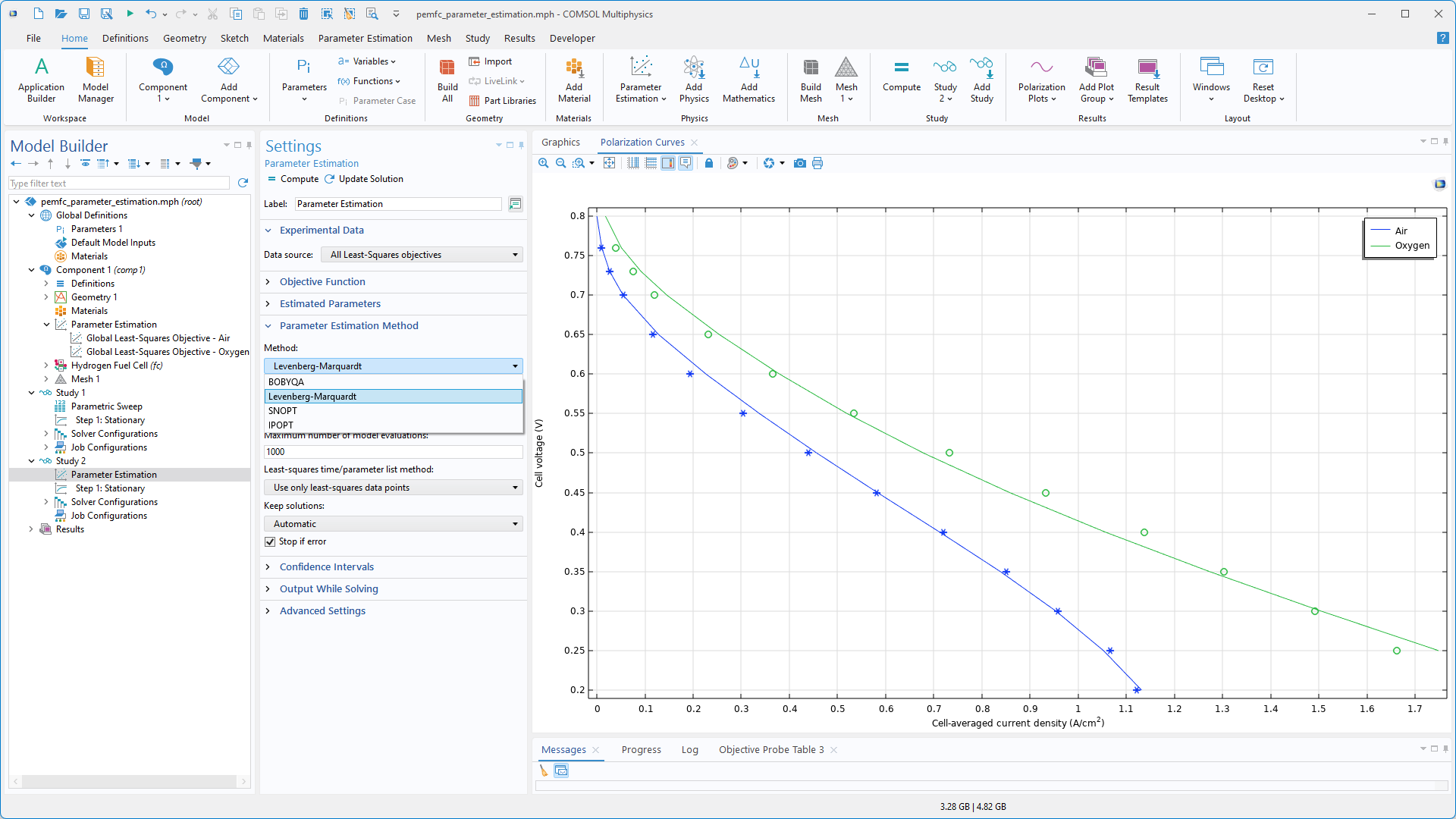
Fonctionnalités et variables améliorées pour les écoulements diphasiques
Les interfaces Pile à combustible à hydrogène et Electrolyse de l'eau permettent désormais de définir des sources de matière dans les phases liquides et gazeuses, que ce soit sur les frontières ou dans les domaines, grâce à un couplage avec les fonctionnalités ajoutées à l'interface Transport de phase dans la version 6.3. Les termes de source de matière peuvent être ajoutés sur les frontières à l'aide de la nouvelle fonctionnalité Source de masse sur frontière et dans les domaines à l'aide de la nouvelle fonctionnalité Source de matière.
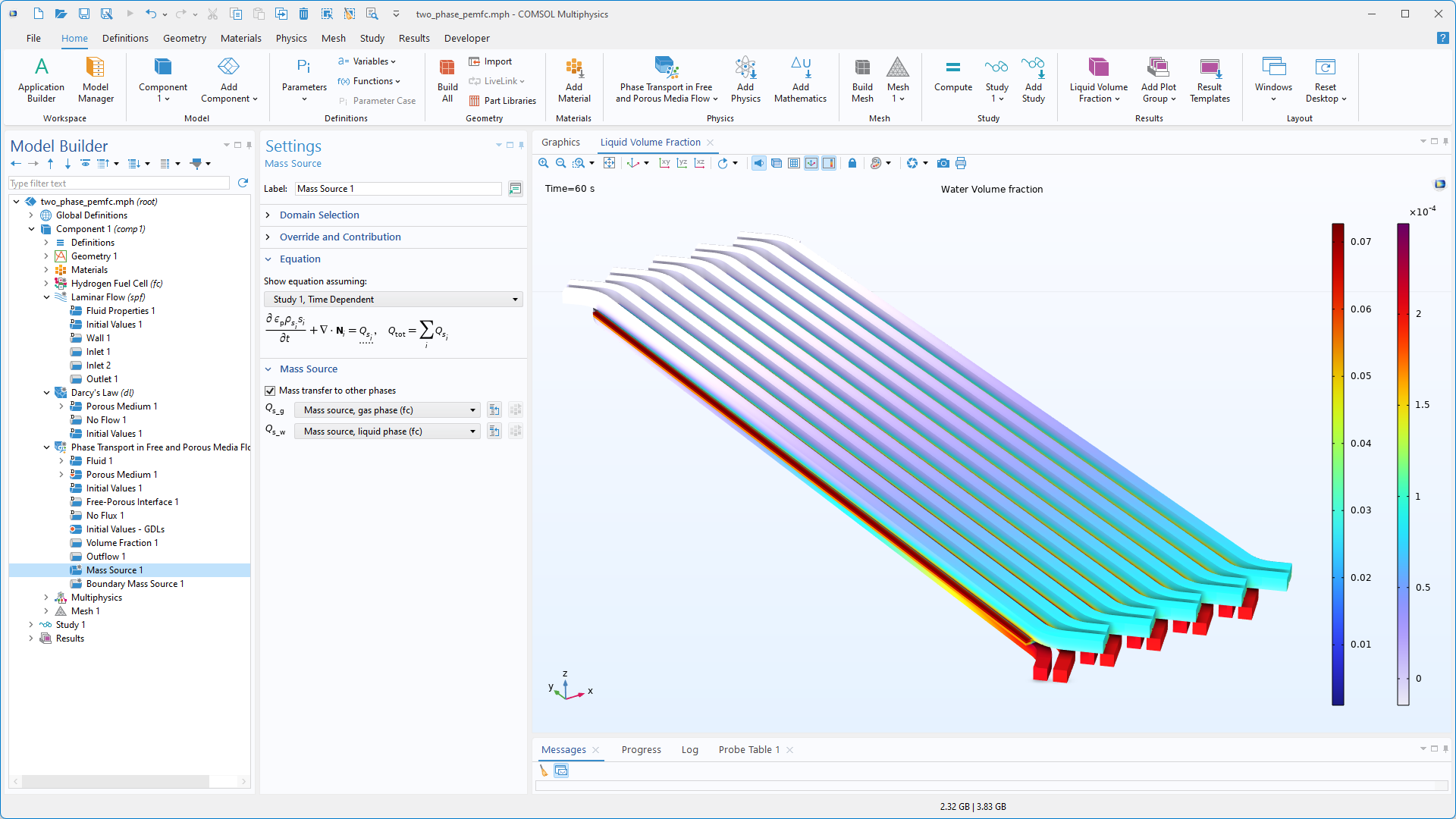
Dans les interfaces Pile à combustible à hydrogène et Electrolyse de l'eau, les options de phase Solide et Liquide sont maintenant disponibles pour le Type d'électrolyte. Cette fonctionnalité spécifie si l'ion porteur de charge contribue au flux de matière liquide et aux variables sources définies par l'interface. De plus, dans l'Assistant de modèlisation, des entrées Alcalin utilisant par défaut l'option Liquide, ont été ajoutées. Les tutoriels suivants illustrent ces améliorations :
- two_phase_pemfc
- zero_gap_aec
- aec_shunt_currents (option Alcalin uniquement)
Migration induite par le cisaillement dans les écoulements multiphasiques dispersés
Dans les suspensions concentrées, des collisions irréversibles entre particules entraînent la migration de celles-ci vers des régions à taux de cisaillement plus faible, un phénomène utilisé dans des procédés tels que la séparation de particules et la microfiltration. Par exemple, dans le cas d'écoulements en canaux pilotés par la pression de mélanges à flottabilité neutre, les particules ont tendance à s'aggréger au centre du canal. Une nouvelle option Inclure la migration induite par le cisaillement, désormais disponible dans le couplage multiphysique Modèle de mélange, prend en charge plusieurs espèces et améliore la précision de ce type de simulation.

Option de loi de puissance pour les perméabilités relatives
La fonctionnalité Milieu poreux de l'interface Transport de phase en milieux poreux comprend désormais une nouvelle option Loi de puissance, facilitant l'implémentation de perméabilités relatives basées sur des expressions de loi de puissance. Cette amélioration simplifie la configuration et la modélisation du comportement de la perméabilité pour les simulations de milieux poreux.
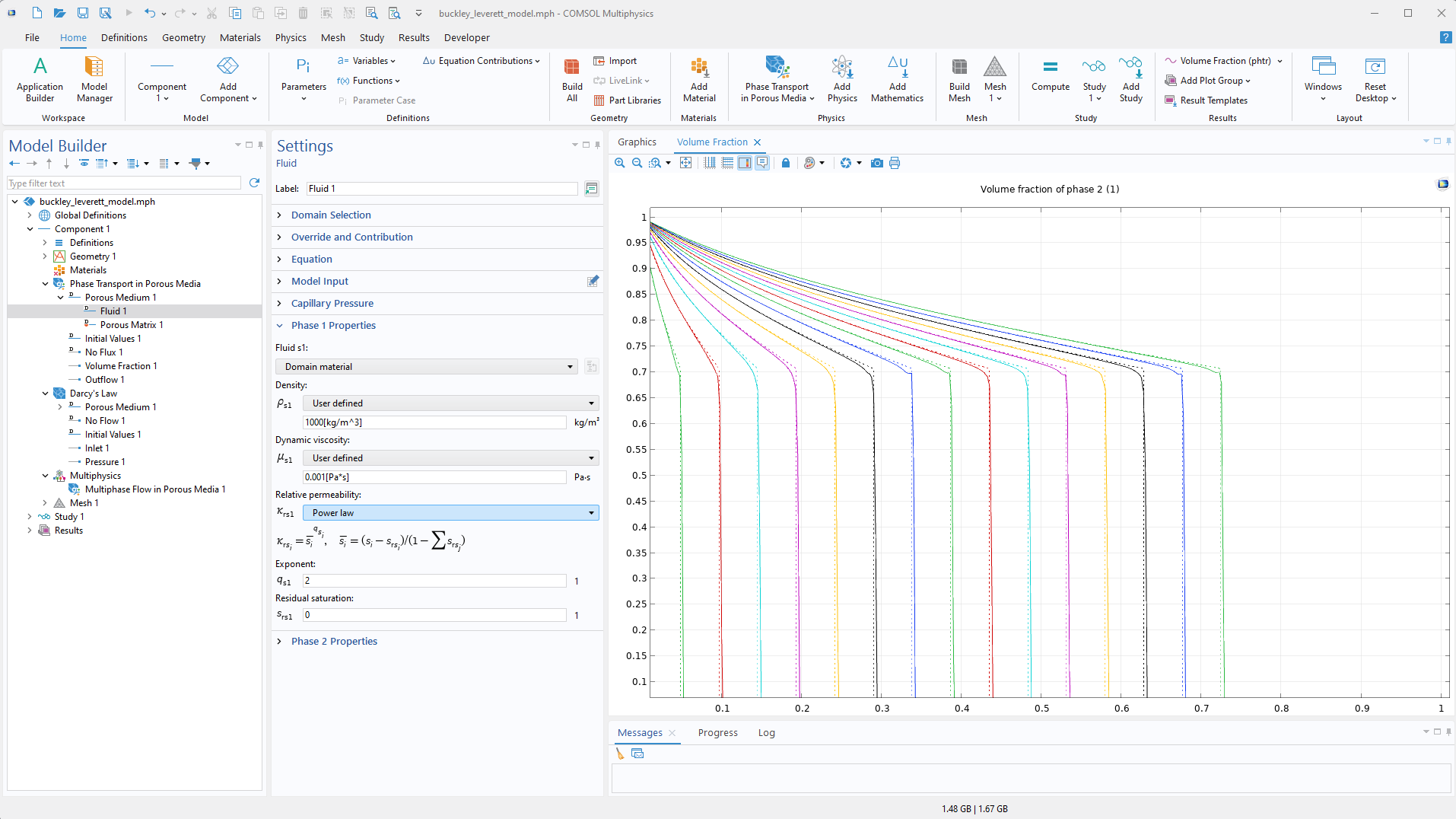
Modèles de résultats dans les interfaces de transport d'espèces chimiques
La création de graphiques pertinents et visuellement attrayants de systèmes réactifs peut se révéler chronophage, car il y a souvent de nombreux réactifs et donc de nombreux champs de concentration à représenter. Pour gagner du temps, il existe plusieurs nouveaux Modèles de résultats dans les interfaces Transport d'espèces chimiques. Parmi ceux-ci, des modèles de réseaux de graphiques sont maintenant disponibles pour inclure jusqu'à quatre concentrations d'espèces simultanément dans la fenêtre Graphiques. Les Modèles de résultats sont disponibles pour toutes les interfaces de Transport d'espèces chimiques, indépendamment du produit complémentaire, mais sont particulièrement utiles pour les interfaces de transport multicomposants incluses dans les modules CFD, Porous Media Flow, Subsurface Flow, et Microfluidics.
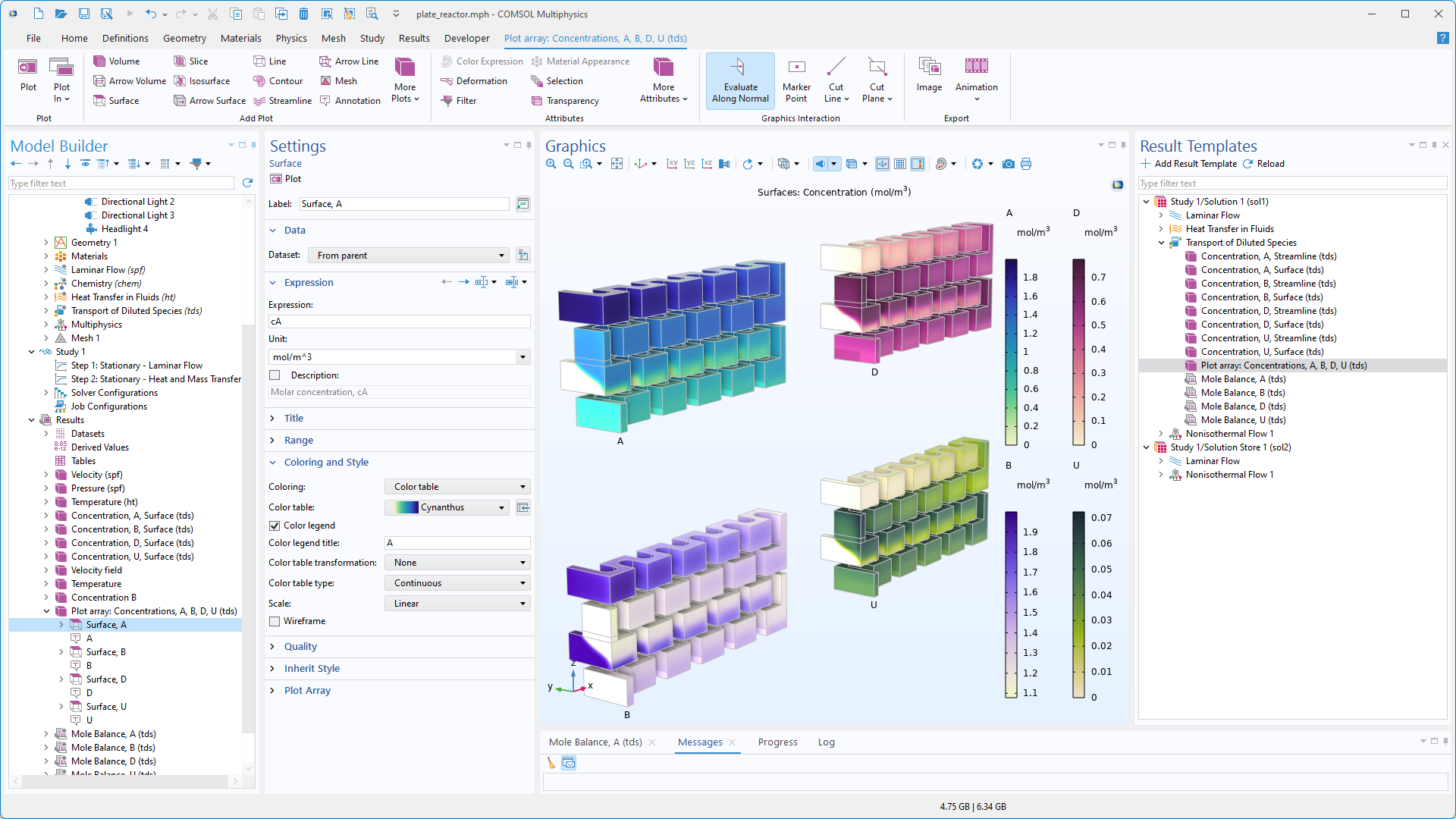
Nouveaux tutoriels
La version 6.3 du logiciel COMSOL Multiphysics® apporte plusieurs nouveaux tutoriels au module Fuel Cell & Electrolyzer.

